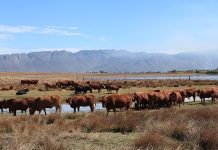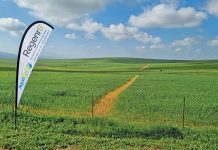AT a Wine Cellars SA meeting held in Stellenbosch recently, it was agreed that wine exhibitions are one of the most powerful marketing tools and can be as successful as whiskey exhibitions have been.
Renowned wine journalist and organiser of Winex Michael Fridjhon noted that exhibitions are more powerful than advertisements. “A once-off small advertisement could cost you almost as much as a stand at a wine expo,” Fridjhon said. “While there’s no guarantee an ad will reach your desired market, by selecting a wine expo carefully you’ll know that the people who attend are serious about wine.”
But he advised wine sellers to first find out about the consumer-to-exhibitor ratio, the income of attendees and the location of the exhibition. “Anybody who wants to make it in the South African wine industry should exhibit in Gauteng,” he advised.
Jacques Roux, the marketing director of DGB, a producer and wholesaler of a comprehensive range of wines and spirits, added that exhibitors should arrange meetings with potential clients before the events to ensure optimal exposure, and use events to compare their products and marketing strategies with those of other exhibitors. – Glenneis Erasmus
Farmers must be 2% more productive to survive
To maintain their finanCIal position, and their current position in the marketplace, farmers need to be at least 2% more productive each year. So said Ernst Janovsky, head of Absa’s agribusiness division, at a recent South African Plant Improvement Organisation (SAPO) information day held in Stellenbosch in the Western Cape.
Janovsky explained that SA farmers are currently experiencing an annual cost curve of 2%. “Our farmers are now world players, while produce prices will always move within the margins set by import and export parity, as determined by international market forces,” he said.
World agriculture is poised to enter a new growth phase, which can be attributed to genetically modified organisms (GMOs) and the biofuel industry. “GMOs are driving increased production and it’s not so much about the tampering with genetics, as the understanding thereof, which is making better strain selection possible,” said Janovsky. International demand for oil is outpacing supply, due to former socialist countries playing catch-up in a new world where capitalism is king. With oil prices above US$100/barrel and expected to only level off at between US$130/barrel and US$140/barrel, biofuel has become a viable option, Janovsky said.
He predicted these factors would make more farmers worldwide consider farming for fuel. And as food crops increasingly compete against fuel crops, agricultural commodity prices could increase even more in the foreseeable future. SA farmers who can keep ahead of the 2% cost curve should experience an increase in net income and profitability, Janovsky said.
Globally, the US is experiencing some structural economic problems, keeping the dollar relatively weak, and the EU is struggling with a currency that’s too strong. African growth predictions are down to 3,5%, mainly due to high interest rates, which will increase by another 1% to 2% later this year.
Janovsky predicts an exchange rate of R8,10 to the US dollar and R14,15 to the euro for the rest of 2008. This makes exports to the EU profitable and farmers should keep this in mind when doing strategic planning.
In conclusion, he warned that there would be some instability in the short-term, as next year is an election year. “Farmers should expect some labour unrest in the form of strikes and protest action. But these will blow over after the election,” he said. – Wouter Kriel








